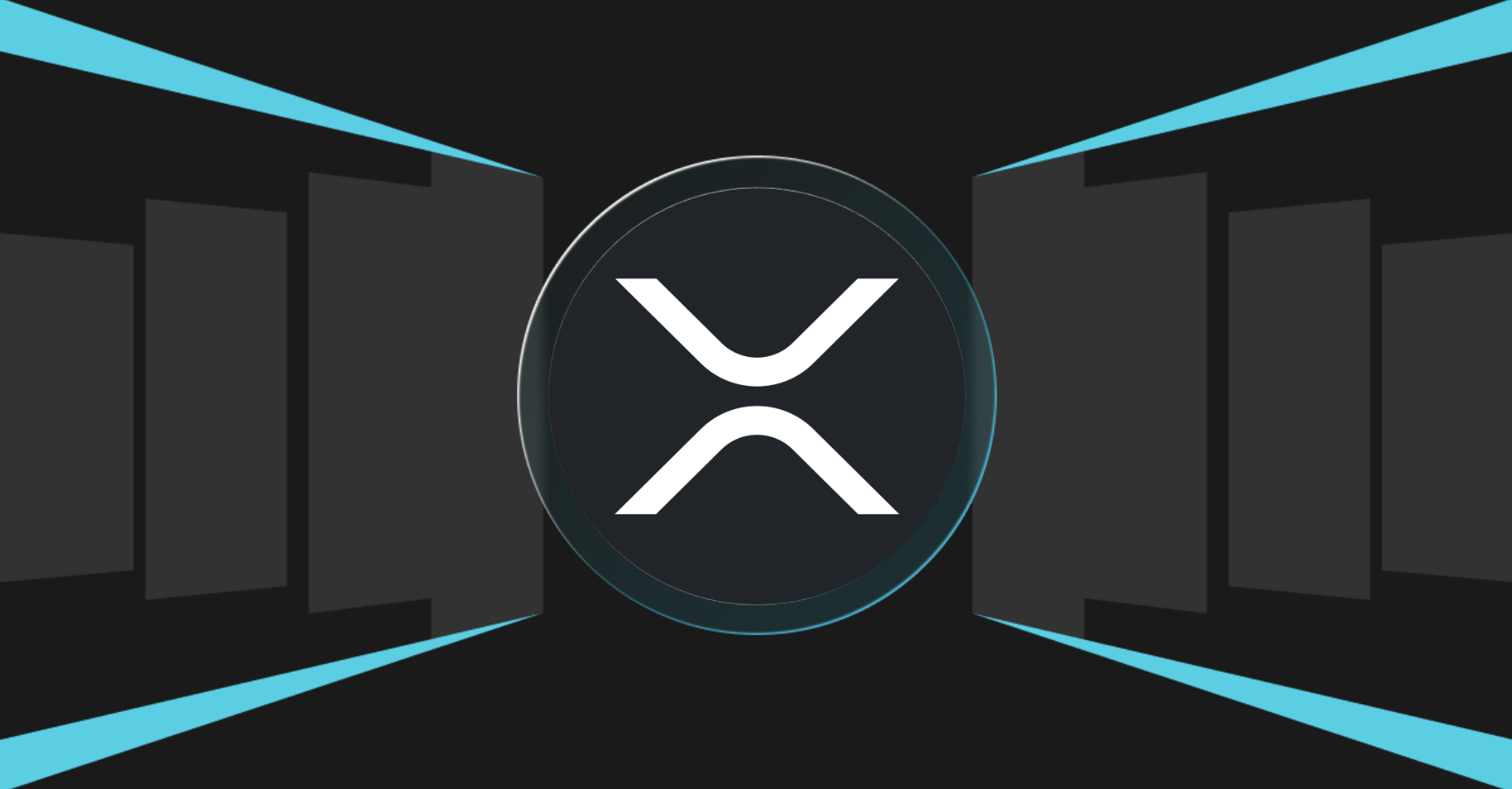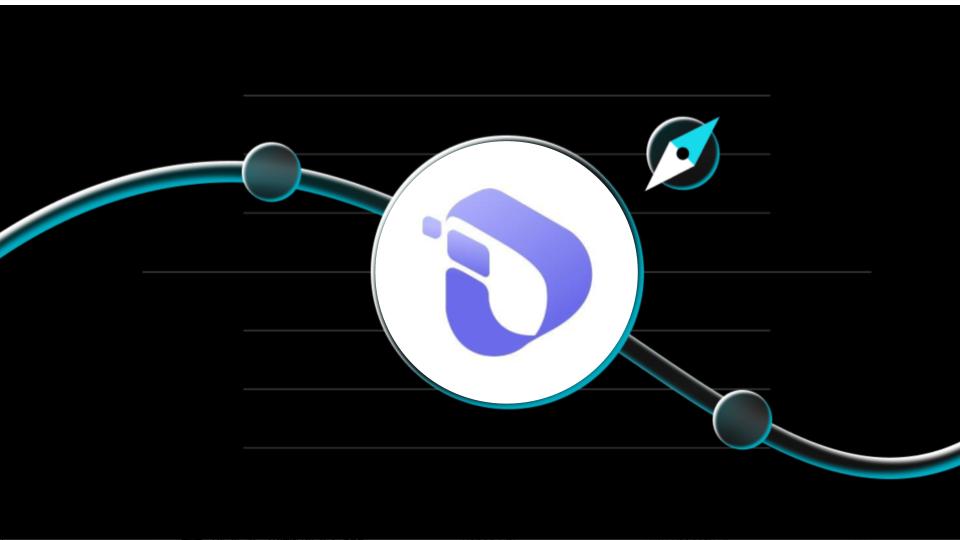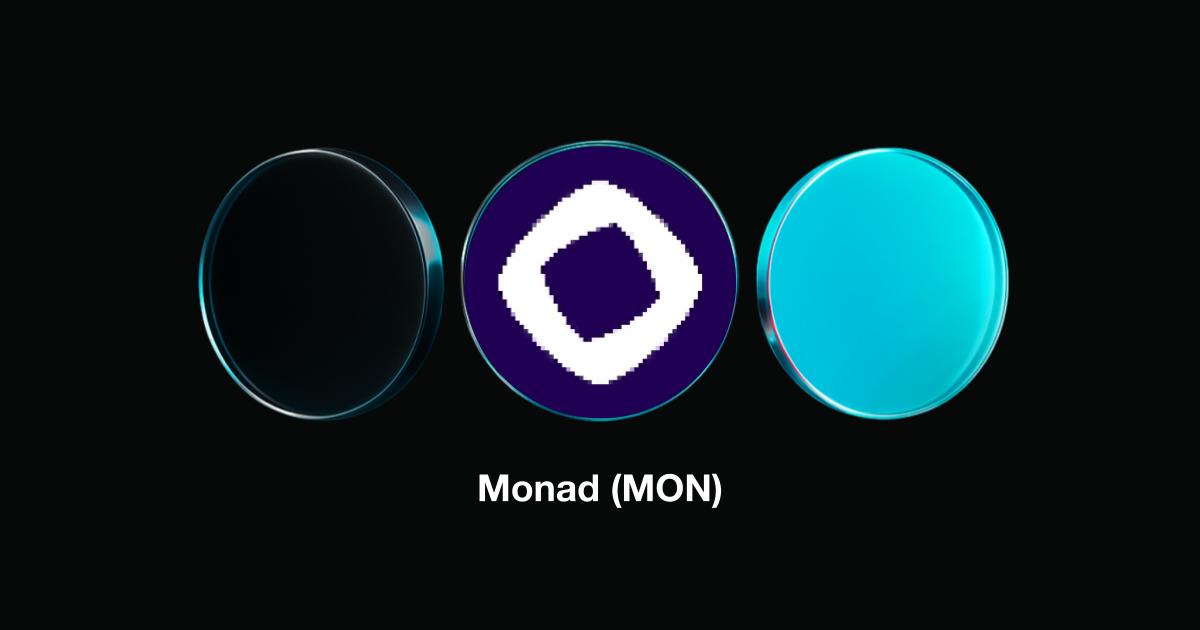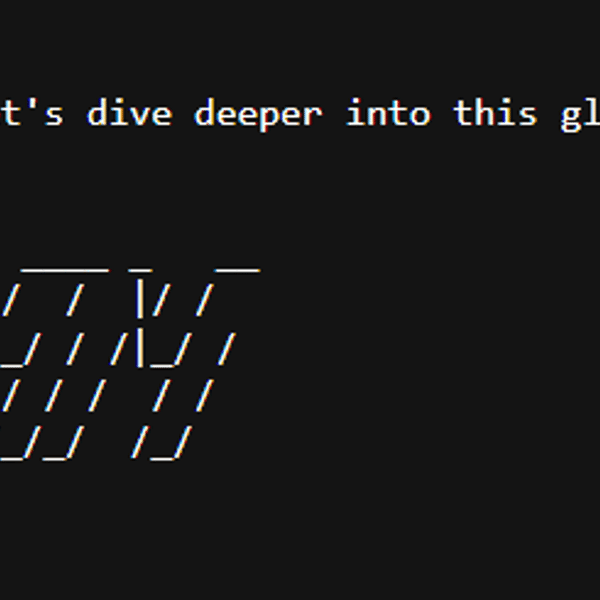Bitget: Ranked top 4 in global daily trading volume!
BTC dominance58.67%
Current ETH GAS: 0.1-1 gwei
Hot BTC ETF: IBIT
Bitcoin Rainbow Chart : Accumulate
Bitcoin halving: 4th in 2024, 5th in 2028
BTC/USDT$91405.77 (+0.81%)Fear and Greed Index28(Fear)
Altcoin season index:0(Bitcoin season)
Total spot Bitcoin ETF netflow +$75.4M (1D); -$1.66B (7D).Welcome gift package for new users worth 6200 USDT.Claim now
Trade anytime, anywhere with the Bitget app.Download now
Bitget: Ranked top 4 in global daily trading volume!
BTC dominance58.67%
Current ETH GAS: 0.1-1 gwei
Hot BTC ETF: IBIT
Bitcoin Rainbow Chart : Accumulate
Bitcoin halving: 4th in 2024, 5th in 2028
BTC/USDT$91405.77 (+0.81%)Fear and Greed Index28(Fear)
Altcoin season index:0(Bitcoin season)
Total spot Bitcoin ETF netflow +$75.4M (1D); -$1.66B (7D).Welcome gift package for new users worth 6200 USDT.Claim now
Trade anytime, anywhere with the Bitget app.Download now
Bitget: Ranked top 4 in global daily trading volume!
BTC dominance58.67%
Current ETH GAS: 0.1-1 gwei
Hot BTC ETF: IBIT
Bitcoin Rainbow Chart : Accumulate
Bitcoin halving: 4th in 2024, 5th in 2028
BTC/USDT$91405.77 (+0.81%)Fear and Greed Index28(Fear)
Altcoin season index:0(Bitcoin season)
Total spot Bitcoin ETF netflow +$75.4M (1D); -$1.66B (7D).Welcome gift package for new users worth 6200 USDT.Claim now
Trade anytime, anywhere with the Bitget app.Download now


Mars Protocol (MARS) price Prediction
Not listed
How much could Mars Protocol be worth in 2025, 2026, 2030, and beyond? What's the predicted price of Mars Protocol for tomorrow, this week, or this month? And what return on investment might you get by holding Mars Protocol until 2050?
This page offers both short- and long-term Mars Protocol price prediction tools to help you evaluate Mars Protocol's future price performance. You can also set your own forecasts to estimate the future value of Mars Protocol.
It is important to note that, given the inherent volatility and complexity of the cryptocurrency market, these predictions—while offering insights into potential price ranges and scenarios—should be viewed with caution and skepticism.
This page offers both short- and long-term Mars Protocol price prediction tools to help you evaluate Mars Protocol's future price performance. You can also set your own forecasts to estimate the future value of Mars Protocol.
It is important to note that, given the inherent volatility and complexity of the cryptocurrency market, these predictions—while offering insights into potential price ranges and scenarios—should be viewed with caution and skepticism.
Mars Protocol price prediction chart for 2025 and beyond
Predicting Mars Protocol's price in the next 10 days based on a predicted daily growth rate of +0.014%.
Price today (Nov 30, 2025)
$0.008979
Price tomorrow (Dec 1, 2025)
$0.008981
Price in 5 days (Dec 5, 2025)
$0.008986
Price this month (Nov 2025)
$0.008995
Price next month (Dec 2025)
$0.009032
Price in 5 months (Apr 2026)
$0.009185
Price in 2025
$0.009201
Price in 2026
$0.009661
Price in 2030
$0.01174
Based on the short-term Mars Protocol daily price predictions, the price of Mars Protocol is projected to be $0.008979 on Nov 30, 2025, $0.008981 on Dec 1, 2025, and $0.008986 on Dec 5, 2025. For Mars Protocol monthly price predictions, the price of Mars Protocol is projected to be $0.008995 in Nov 2025, $0.009032 in Dec 2025, and $0.009185 in Apr 2026. For long-term Mars Protocol yearly price predictions, the price of Mars Protocol is projected to be $0.009201 in 2025, $0.009661 in 2026, and $0.01174 in 2030.
Mars Protocol price prediction for today
The current price of Mars Protocol (MARS) is $0.01640, with a 24h price change of 18.75%. The price of Mars Protocol (MARS) is expected to reach $0.008979 today. Learn more about Mars Protocol price today.
Mars Protocol price prediction for Nov 2025
The price of Mars Protocol (MARS) is expected to change by 15.07% in Nov 2025, and the price of Mars Protocol (MARS) is expected to reach $0.008995 by the end of Nov 2025.
Mars Protocol price prediction for 2025
The price of Mars Protocol (MARS) is expected to change by -67.96% in 2025, and the price of Mars Protocol (MARS) will reach $0.009201 by the end of 2025.
Long-term Mars Protocol price prediction: 2026, 2030, 2035, 2040, 2050
The following is a Mars Protocol price prediction model based on a fixed growth rate. It ignores the impact of market fluctuations, external economic factors, or emergencies, and instead focuses on the average price trend of Mars Protocol. It helps investors analyzes and quickly calculate the profit potential of investing in Mars Protocol.
Enter your predicted annual growth rate for Mars Protocol price, and see how the Mars Protocol value will change in the future.
Enter your predicted annual growth rate for Mars Protocol price, and see how the Mars Protocol value will change in the future.
Yearly Mars Protocol price prediction based on 5% predicted annual growth
%
Predicted annual growth. Enter a percentage between -100% and +1000%.
| Year | Predicted price | Total ROI |
|---|---|---|
2026 | $0.009661 | +5.00% |
2027 | $0.01014 | +10.25% |
2028 | $0.01065 | +15.76% |
2029 | $0.01118 | +21.55% |
2030 | $0.01174 | +27.63% |
2035 | $0.01499 | +62.89% |
2040 | $0.01913 | +107.89% |
2050 | $0.03116 | +238.64% |
Based on an annual growth rate of 5%, the Mars Protocol (MARS) price is expected to reach $0.009661 in 2026, $0.01174 in 2030, $0.01913 in 2040, and $0.03116 in 2050.
Mars Protocol price prediction for 2026
In 2026, based on a predicted annual growth rate of 5%, the price of Mars Protocol (MARS) is expected to reach $0.009661. Based on this forecast, the cumulative return on investment from holding Mars Protocol until the end of 2026 would be 5.00%.
Mars Protocol price prediction for 2030
In 2030, based on a predicted annual growth rate of 5%, the price of Mars Protocol (MARS) is expected to reach $0.01174. Based on this forecast, the cumulative return on investment from holding Mars Protocol until the end of 2030 would be 27.63%.
Mars Protocol price prediction for 2035
In 2035, based on a predicted annual growth rate of 5%, the price of Mars Protocol (MARS) is expected to reach $0.01499. Based on this forecast, the cumulative return on investment from holding Mars Protocol until the end of 2035 would be 62.89%.
Mars Protocol price prediction for 2040
In 2040, based on a predicted annual growth rate of 5%, the price of Mars Protocol (MARS) is expected to reach $0.01913. Based on this forecast, the cumulative return on investment from holding Mars Protocol until the end of 2040 would be 107.89%.
Mars Protocol price prediction for 2050
In 2050, based on a predicted annual growth rate of 5%, the price of Mars Protocol (MARS) is expected to reach $0.03116. Based on this forecast, the cumulative return on investment from holding Mars Protocol until the end of 2050 would be 238.64%.
How much will you earn from your Mars Protocol?
If you invest $100 in Mars Protocol this year and hold until 2026, the price prediction suggests a potential profit of $5, reflecting a 5.00% ROI. (Fees are not included in this estimate).
Disclaimer: This is not investment advice. The information provided is for general informational purposes only. No information, materials, services and other content provided on this page constitute a solicitation, recommendation, endorsement, or any kind of financial, investment, or other advice. Seek independent professional consultation in the form of legal, financial, and fiscal advice before making any investment decision.
Short-term Mars Protocol price prediction table
Daily Mars Protocol price prediction based on a 0.014% predicted daily growth
What is the Mars Protocol price prediction for tomorrow, 5 days, 10 days, and beyond?%
Predicted daily growth. Enter a percentage between –100% and +1000%.
| Date | Predicted price | Total ROI |
|---|---|---|
Dec 1, 2025 (Tomorrow) | $0.008981 | +0.01% |
Dec 2, 2025 | $0.008982 | +0.03% |
Dec 3, 2025 | $0.008983 | +0.04% |
Dec 4, 2025 | $0.008984 | +0.06% |
Dec 5, 2025 (5 days later) | $0.008986 | +0.07% |
Dec 6, 2025 | $0.008987 | +0.08% |
Dec 7, 2025 | $0.008988 | +0.10% |
Dec 8, 2025 | $0.008989 | +0.11% |
Dec 9, 2025 | $0.008991 | +0.13% |
Dec 10, 2025 (10 days later) | $0.008992 | +0.14% |
Based on a daily growth rate of 0.014%, the price of Mars Protocol (MARS) is expected to reach $0.008981 in Dec 1, 2025, $0.008986 in Dec 5, 2025, and $0.008992 in Dec 10, 2025.
Mars Protocol price prediction for Dec 1, 2025
Based on the daily growth rate of 0.014% for Mars Protocol price prediction, the estimated value of 1 Mars Protocol will be $0.008981 on Dec 1, 2025 (Tomorrow). The expected ROI from investing and holding Mars Protocol until the end of Dec 1, 2025 is 0.01%.
Mars Protocol price prediction for Dec 5, 2025
Based on the daily growth rate of 0.014% for Mars Protocol price prediction, the estimated value of 1 Mars Protocol will be $0.008986 on Dec 5, 2025 (5 days later). The expected ROI from investing and holding Mars Protocol until the end of Dec 5, 2025 is 0.07%.
Mars Protocol price prediction for Dec 10, 2025
Based on the daily growth rate of 0.014% for Mars Protocol price prediction, the estimated value of 1 Mars Protocol will be $0.008992 on Dec 10, 2025 (10 days later). The expected ROI from investing and holding Mars Protocol until the end of Dec 10, 2025 is 0.14%.
Monthly Mars Protocol price prediction based on a 0.42% predicted monthly growth
What is the Mars Protocol price prediction for next month, 5 months, 10 months, and beyond?%
Predicted monthly growth. Enter a percentage between –100% and +1000%.
| Date | Predicted price | Total ROI |
|---|---|---|
Dec 2025 (Next month) | $0.009032 | +0.42% |
Jan 2026 | $0.009070 | +0.84% |
Feb 2026 | $0.009108 | +1.27% |
Mar 2026 | $0.009147 | +1.69% |
Apr 2026 (5 months later) | $0.009185 | +2.12% |
May 2026 | $0.009224 | +2.55% |
Jun 2026 | $0.009262 | +2.98% |
Jul 2026 | $0.009301 | +3.41% |
Aug 2026 | $0.009340 | +3.84% |
Sep 2026 (10 months later) | $0.009380 | +4.28% |
Based on a monthly growth rate of 0.42%, the price of Mars Protocol (MARS) is expected to reach $0.009032 in Dec 2025, $0.009185 in Apr 2026, and $0.009380 in Sep 2026.
Mars Protocol price prediction for Dec 2025
Based on a monthly growth rate of 0.42%, the predicted price of Mars Protocol (MARS) in Dec 2025 (Next month) is $0.009032. The expected ROI from investing and holding Mars Protocol until the end of Dec 2025 is 0.42%.
Mars Protocol price prediction for Apr 2026
Based on a monthly growth rate of 0.42%, the predicted price of Mars Protocol (MARS) in Apr 2026 (5 months later) is $0.009185. The expected ROI from investing and holding Mars Protocol until the end of Apr 2026 is 2.12%.
Mars Protocol price prediction for Sep 2026
Based on a monthly growth rate of 0.42%, the predicted price of Mars Protocol (MARS) in Sep 2026 (10 months later) is $0.009380. The expected ROI from investing and holding Mars Protocol until the end of Sep 2026 is 4.28%.
Trending cryptocurrency price prediction articles

XRP Price Prediction: Bullish Signals Emerge—Will XRP Price Explode After Breaking $2.40?
The world of cryptocurrency is watching closely as XRP price action approaches a critical level. This article provides a comprehensive analysis of XRP price trends, technical signals, the impact of ETFs, whale activity, and a detailed XRP price prediction for the coming weeks and months. If you’re looking to understand the latest developments, key technical levels, and what could drive the next explosive move in XRP price, read on for a complete guide.
Bullish Structure Formed Despite Recent Sluggish XRP Price Performance
Following a sharp sell-off, the XRP price has shown remarkable resilience, bouncing cleanly off the important $1.80 support—historically a strong demand zone. This XRP price recovery is no mere coincidence; it’s supported by both solid structural demand and momentum indicators signaling oversold conditions. Now, XRP price trades within the all-important $2.20 to $2.25 consolidation zone, a pivotal area for determining the next major XRP price move.
Structural highlights on the XRP price chart:
A decisive reversal from $1.80, with aggressive buyers quickly pushing XRP price back above $2.00.
Swift return to the $2.20–$2.25 range, setting up a possible breakout for the XRP price.
Momentum indicators such as the Stochastic RSI signal an uptrend for XRP price, although a short-term cool-down may occur before another surge.
RSI Surpasses 80, Signaling an XRP Price Surge Trend
The Relative Strength Index (RSI) on monthly charts has reached above 80 for only the second time in XRP’s history, according to technical analysts cited by Bitget and CoinEdition. This surge in RSI is not just a technical milestone; it indicates strong momentum behind the XRP price and suggests the start of a late-stage bull run rather than an imminent reversal. Importantly, the XRP price RSI remains above 50, meaning there is room for the XRP price to climb even higher before any significant correction.
ETF Inflows Drive Trading, But Why Isn't the XRP Price Exploding?
XRP’s recent market excitement has been further fueled by ETF developments. There are now approximately 20 XRP ETF filings pending before the U.S. SEC, trailing only Bitcoin and Solana, according to Bloomberg ETF analyst Eric Balchunas. Notably, Bitwise CIO Matt Hougan predicts an XRP ETF could easily attract over a billion dollars in assets within months of launch, crediting the unwavering support of the “XRP Army” despite broader industry skepticism.
Institutional inflows are already significant. Recent spot ETF launches—including those by Canary, Bitwise, Franklin Templeton, and Grayscale—have absorbed up to 79 million XRP on the first day, with daily inflows often ranging from 16 to 80 million XRP. Deep-pocketed investors (“whales”) have accumulated nearly $560 million in XRP over just a week, even as 190 million XRP was quickly offloaded, reflecting a highly active and dynamic trading landscape.
Despite this, even with a $7.19 billion ETF inflow in 24 hours and XRP price market cap surging to $122.49 billion, the XRP price hasn’t exploded upwards. The reason? Exchange balances have declined by 430 million tokens in just eight days, tightening liquidity and setting up the XRP price for high volatility as the available supply drops. Both institutional ETFs and whales are absorbing circulating XRP, but some traders are taking profits into these rallies, leading to near-term XRP price consolidation.
$2.40: The Key XRP Price Level That Could Trigger an Explosion
The $2.30–$2.40 zone is now the critical resistance for the XRP price. Analysts widely agree that if XRP price can break and close above $2.40, it could lead to a strong bullish breakout, pushing the XRP price toward $2.50, $2.57, and even $3.12. These targets correspond with historical resistance and structural pivot zones in previous XRP price cycles.
Source: TradingView
If the XRP price breaks above $2.40 decisively, expect new buyers to enter the market, resulting in increased volumes and possibly a rapid XRP price ascent. Loss of the $2.20–$2.00 support, however, could see XRP price retest $1.80.
XRP Price Forecast: What’s Next?
Short-Term XRP Price Scenarios:
Bullish: XRP price breaks and holds above $2.30 or $2.40, targeting $2.50 and higher.
Bearish: XRP price loses $2.20, leading to further declines to $2.10, $2.00, or a retest of $1.80 support.
Mid-Term Outlook:Assuming ETF demand continues and exchange XRP balances drop further, XRP price could reach $3.00 in upcoming quarters. Institutional activity and the “XRP Army” community remain central to ongoing XRP price momentum.
Key XRP Price Levels:
Support: $1.80, $2.00, $2.10
Resistance: $2.30, $2.40, $2.50, $2.57, $3.12
Conclusion
The XRP price is at a critical crossroads. Robust technical signals, institutional ETF support, shrinking exchange supply, and resilient buying interest point to the potential for a significant XRP price breakout, especially above the $2.40 level. However, risks remain, and investors should track key XRP price levels, ETF inflows, and liquidity changes closely.
For both short-term traders and long-term holders, the coming weeks could be defining for XRP price trajectory. Stay informed on XRP price developments to position yourself wisely in this rapidly evolving market.
Bitget Academy2025-11-28 10:27

Orca (ORCA) Price Prediction 2025, 2026-2030: How High Could Solana’s DEX Token Go?
Orca (ORCA), the native token of one of Solana’s leading decentralized exchanges, has captured market attention following a sharp price surge in late November 2025. The token more than doubled in value within 24 hours, climbing from just above $1.05 to over $2.00. This spike marked one of ORCA’s strongest single-day performances of the year and reignited interest in its role within the broader Solana DeFi ecosystem.
Unlike the March rally earlier this year, which was fueled by a major exchange listing, the latest momentum appears to stem from a combination of speculative trading activity and renewed community focus on protocol developments. In particular, proposed governance actions involving treasury-funded buybacks and validator staking incentives have stirred bullish sentiment. As ORCA reenters the conversation among top-performing altcoins, investors are now turning to the long-term picture. This article explores the reasons behind ORCA’s recent pump and outlines price forecasts through 2030.
What Is Orca (ORCA)?
Orca is a decentralized exchange (DEX) built on the Solana blockchain, designed to offer fast, user-friendly token swaps with minimal fees. It is best known for its innovative "Whirlpool" concentrated liquidity pools, which allow liquidity providers to deploy capital more efficiently by focusing it within specific price ranges. This design improves trading depth and reduces slippage, making Orca one of the most efficient DEXs on Solana.
The ORCA token serves as the platform’s native utility and governance asset. Holders can participate in protocol decisions through governance voting and can stake ORCA to earn additional rewards. As of late 2025, Orca has established itself as a core component of the Solana DeFi landscape, with hundreds of millions in cumulative trading volume and a growing user base. Its emphasis on accessibility and performance continues to position it as a standout project within the increasingly competitive DEX ecosystem.
Why ORCA Pumped Today
Orca (ORCA) Price Today
Source: CoinMarketCap
ORCA’s price surge in November 2025 was fueled primarily by a combination of renewed speculative interest, increased trading volume, and community-driven optimism surrounding upcoming governance proposals. After weeks of subdued activity, the token more than doubled in value during a 24-hour period, reaching a local high above $2.00. This unexpected move came without any major exchange listing or high-profile partnership, suggesting that the rally was sparked by market momentum and reinforced by protocol-level developments.
Central to this renewed enthusiasm is a proposal from the Orca DAO to initiate a series of token buybacks and expand validator staking incentives using assets held in the project’s treasury. The plan, which includes deploying SOL and USDC reserves to purchase ORCA from the open market, has generated bullish sentiment among holders anticipating reduced token supply and stronger ecosystem alignment. As the broader Solana ecosystem also shows signs of recovery, traders appear to be rotating back into DeFi-native tokens like ORCA in anticipation of further upside.
Price Prediction for 2025
Following its sharp rally in November 2025, ORCA is now trading in the $1.60 to $1.80 range. The token's near-term trajectory will largely depend on the success of proposed buybacks, broader DeFi sentiment, and whether the Solana ecosystem continues its recent rebound.
● Bullish Scenario: If Orca DAO executes its treasury-backed buybacks, staking incentives are implemented successfully, and Solana DeFi sees a resurgence in total value locked (TVL), ORCA could retest its March highs. In this case, the token might reach between $4.00 and $5.00 by year-end, especially if new exchange listings or major ecosystem partnerships materialize.
● Neutral Scenario: Should the buyback proposal proceed slowly or fail to ignite significant trading volume, but the market remains stable, ORCA could trade sideways with moderate gains. In this scenario, ORCA may finish 2025 in the $2.20 to $2.80 range as investors await clearer signals from governance actions and on-chain metrics.
● Bearish Scenario: If market conditions deteriorate, governance proposals stall, or Solana suffers another bout of technical or reputational setbacks, ORCA could lose its current momentum. Under bearish conditions, the token might retrace to previous support levels between $1.20 and $1.50, particularly if liquidity dries up or community confidence wanes.
Price Prediction for 2026
Looking ahead to 2026, ORCA’s performance will likely hinge on how effectively the protocol builds on its recent momentum. Key factors include the outcome of current governance proposals, actual implementation of token buybacks, and how well Orca competes with other Solana-based DEXs for liquidity and user retention. Market sentiment around Solana and the broader DeFi sector will also play a crucial role.
● Bullish Scenario: If Orca solidifies its place as a leading DEX on Solana, governance-backed incentives attract new liquidity, and the overall crypto market enters a bullish phase, ORCA could experience sustained growth. Under these conditions, the token may trade between $4.50 and $6.00 in 2026, particularly if TVL and trading volume continue to expand meaningfully.
● Neutral Scenario: In a more tempered environment where Orca maintains steady usage but faces increased competition or delayed feature rollouts, price appreciation may be slower. In this base case, ORCA might stabilize in the $2.80 to $3.50 range as it matures alongside the Solana DeFi landscape.
● Bearish Scenario: If Orca fails to execute its roadmap, loses market share to more aggressive competitors, or the broader market experiences another contraction, ORCA could struggle to hold its gains. A retracement to the $1.60 to $2.00 level is possible, especially if token buybacks are underfunded or community participation declines.
Price Prediction for 2027
By 2027, Orca will be well into its second full governance cycle, and its position in the Solana ecosystem will be more clearly defined. The market will be watching whether Orca can maintain its relevance amid evolving DeFi competition, and whether long-term token utility justifies sustained value growth.
● Bullish Scenario: If Orca continues to innovate with concentrated liquidity, governance becomes more active, and Solana’s DeFi sector expands globally, ORCA could gain long-term investor confidence. In a strong market with rising adoption, ORCA might trade between $6.50 and $8.00, reflecting both utility demand and speculative momentum.
● Neutral Scenario: Assuming gradual user growth, stable governance participation, and moderate on-chain activity, ORCA may see slower but steady appreciation. In this moderate case, the token could find a price range of $3.50 to $5.00, anchored by organic protocol usage and consistent, if unspectacular, ecosystem performance.
● Bearish Scenario: If DeFi adoption plateaus, Orca fails to differentiate itself, or Solana's dominance fades due to new blockchain competition, ORCA’s growth could stall. In a weaker scenario, the token might trade in the $2.20 to $3.00 range, weighed down by stagnant volume and governance fatigue.
Price Prediction for 2028–2029
As Orca matures into the latter half of the decade, its long-term valuation will be shaped by real-world usage, protocol sustainability, and the broader evolution of decentralized finance. By this point, investors will expect consistent utility, strong governance engagement, and measurable on-chain growth to justify holding ORCA.
● Bullish Scenario: If Orca emerges as a dominant Solana DEX, attracts institutional liquidity, and introduces additional layers of utility such as cross-chain integrations or advanced staking models, ORCA could break out significantly. In a bullish long-term environment, the token may reach between $9.00 and $12.00, particularly if crypto adoption accelerates globally and regulatory clarity boosts investor confidence.
● Neutral Scenario: Assuming the protocol maintains relevance but doesn’t break into mainstream usage, ORCA could grow modestly alongside overall DeFi expansion. In this case, the token might trade in the $5.50 to $7.00 range, supported by a stable user base, steady trading activity, and routine governance cycles.
● Bearish Scenario: If Orca’s innovation lags, new competitors dominate Solana’s liquidity landscape, or macroeconomic conditions suppress crypto growth, ORCA may underperform. In a bearish scenario, the token could settle between $3.00 and $4.00, reflecting limited utility growth and declining ecosystem presence.
Key Factors Influencing ORCA’s Future Price
Several interlinked variables will determine whether ORCA can sustain long-term value appreciation or fade into obscurity. Understanding these drivers is critical for evaluating the token’s outlook between now and 2030.
1. Protocol Governance and Buyback Mechanisms
ORCA’s tokenomics are evolving through active governance proposals. The most notable initiative under discussion involves deploying treasury-held assets, including SOL and USDC, to repurchase ORCA tokens from the open market. If implemented, this could reduce circulating supply and support upward price pressure. The community's engagement and the execution of these proposals will play a direct role in shaping token value.
2. Solana Ecosystem Growth
Orca’s fortunes are tightly tied to the health of the Solana blockchain. If Solana continues attracting developers, scaling DeFi applications, and regaining institutional interest, protocols like Orca will likely benefit from network effects. On the other hand, any prolonged technical issues, outages, or loss of developer mindshare could undermine ORCA’s potential.
3. Competitive Landscape in DeFi
Orca faces fierce competition from other Solana-based DEXs such as Raydium, as well as emerging multi-chain platforms. To retain market share, Orca must continue innovating—through liquidity tools like Whirlpool, improved UX, and future products. Falling behind in functionality or losing key integrations could limit its growth and price prospects.
4. Broader Crypto Market Cycles
Like most altcoins, ORCA’s long-term price path will be shaped by overall crypto market sentiment. In bullish phases, capital rotation into high-potential DeFi tokens typically boosts ORCA. Conversely, risk-off environments or global regulatory tightening could reduce speculative flows and depress prices across the board.
Conclusion
ORCA’s November 2025 price surge has reignited interest in Solana-based DeFi and brought the token back into the spotlight. While the rally was fueled largely by renewed speculative momentum and community-driven optimism around governance-led buybacks, it also highlighted Orca’s enduring relevance within the decentralized exchange landscape. As one of Solana’s most active DEXs, Orca’s roadmap, token economics, and user growth will be key indicators of its long-term viability.
Looking ahead to 2025 through 2030, ORCA’s price outlook spans a wide range. In bullish scenarios supported by successful governance execution, growing liquidity, and favorable market conditions, the token could climb to double-digit territory by the end of the decade. In more conservative or bearish environments, ORCA may struggle to maintain current levels or gradually decline as competition intensifies. Ultimately, ORCA’s future will be determined by how well it evolves as a product, activates its community, and captures real utility in an increasingly mature DeFi ecosystem.
Disclaimer: The opinions expressed in this article are for informational purposes only. This article does not constitute an endorsement of any of the products and services discussed or investment, financial, or trading advice. Qualified professionals should be consulted prior to making financial decisions.
Bitget Academy2025-11-27 10:40

What Is Interlink (ITLG)? The Human Verification Protocol Aiming for Global Web3 Adoption
As Web3 evolves from speculative tokens to usable infrastructure, one question keeps gaining urgency: how can we ensure that the people behind wallets, DAOs, and dApps are real human beings — not bots or fake accounts? From Sybil attacks in governance to identity fraud in airdrops, the lack of trusted identity has become a roadblock to mainstream adoption.
Enter Interlink (ITLG) — a blockchain protocol that places verified human identity at the core of its ecosystem. Built on a principle called Proof of Personhood, Interlink is designed to make blockchain more secure, inclusive, and human-first. Whether you're a developer launching a dApp, a DAO member trying to prevent voter manipulation, or simply a crypto enthusiast seeking meaningful participation, Interlink aims to offer a bot-resistant foundation to build on. In this article, we’ll break down what Interlink is, how it works, its tokenomics, and where the project could be heading through 2030.
What Is Interlink (ITLG)?
Interlink is a Web3 protocol that puts verified human identity at the heart of the blockchain. Its mission is to build a decentralized network powered exclusively by real people — not bots, AI agents, or fake accounts. Instead of relying on Proof of Work or Proof of Stake, Interlink introduces Proof of Personhood: a consensus model where each participant is a unique, verified human. Through facial recognition, liveness detection, and encrypted identity hashes, the network ensures one person = one node, dramatically reducing the risk of Sybil attacks and identity farming.
At the center of this human-first ecosystem is the Interlink Genesis Token (ITLG) — a utility and governance token earned by verified users for participating in the network. From community voting to in-app purchases and staking rewards, ITLG powers the on-chain economy for this emerging identity layer. Interlink’s broader vision is global: give anyone with a smartphone the ability to join Web3 securely, equitably, and without financial barriers. It’s not just infrastructure — it’s a new digital citizenship model designed for scale.
How Interlink (ITLG) Works
InterLink Human Network
At the core of Interlink’s design is a simple but powerful idea: every wallet should belong to a real person. To make that possible, Interlink replaces mining rigs and staking pools with something more inclusive — biometric human verification. Users download the Interlink app, complete a quick facial recognition and liveness check, and are then issued an encrypted identity hash. This on-chain hash represents a verified individual — no duplicates, no bots, no farmed accounts.
Once verified, these users become “Human Nodes” and can participate across the network without needing expensive gear or massive capital. Here's what that looks like in action:
● One human, one node: Verification ensures each participant is a real, unique individual. It’s the backbone of Interlink’s Proof of Personhood consensus.
● Bot-resistant validation: Only verified humans can mine blocks, validate transactions, and vote on governance proposals, reducing manipulation and Sybil attacks.
● Privacy built-in: Interlink uses zero-knowledge proofs to verify identities without ever revealing personal biometric data on-chain.
● Cross-chain access: With its own wallet infrastructure, a verified Interlink ID can unlock services across Ethereum, BNB Chain, Solana, and beyond.
● Utility at the user layer: Verified users can earn ITLG, spend it on dApps, participate in community-driven decision-making, or access tools built on the Interlink platform.
Interlink (ITLG) Tokenomics
Interlink (ITLG) Token Allocation
Interlink operates on a dual-token economy designed to separate internal utility from broader liquidity demands. The primary token, ITLG (Interlink Genesis Token), is distributed directly to verified users through identity validation, referrals, and participation in the network. It functions as a utility and governance asset, giving holders the ability to vote in the Interlink DAO, engage with dApps, and unlock ecosystem features.
In contrast, ITL, the platform’s secondary token, is designed for external payments, institutional participation, and liquidity provisioning on exchanges. This two-token structure allows Interlink to incentivize real human activity on one layer, while maintaining stability and interoperability on another.
Interlink (ITLG) Price Prediction for 2025–2030
Interlink plans to list ITLG toward the end of 2025 or early 2026, with the final call left to a community vote via the InterLink DAO. The Token Generation Event (TGE) will use a linear vesting model tied to token holdings, with lock-ups lasting up to 180 months — a deliberate move to reduce sell pressure and promote long-term alignment. This structure, combined with the project’s bot-resistant design, aims to foster organic value rather than speculative hype.
To further curb inflation, Interlink will implement up to 100 halving events and burn ITLG through on-chain activity. While no exact launch price has been set, valuation will be proportional to the number of verified users at listing — meaning adoption will directly influence market entry. The dual-token design separates community governance (ITLG) from institutional utility (ITL), allowing the ecosystem to scale across both retail and enterprise layers without diluting its economic core.
Conclusion
Interlink is shaping up to be more than just another blockchain project. With human verification at its core, it tackles one of the most persistent challenges in Web3: proving that users are real people. By prioritizing identity, transparency, and long-term sustainability, the protocol offers a fresh approach to decentralized participation.
The road ahead will depend on execution, adoption, and how well the ecosystem scales across both grassroots and institutional layers. But with a DAO-led governance model, deflationary tokenomics, and a dual-token structure designed for real-world integration, Interlink (ITLG) is making a serious bid to become the human layer of Web3.
Disclaimer: The opinions expressed in this article are for informational purposes only. This article does not constitute an endorsement of any of the products and services discussed or investment, financial, or trading advice. Qualified professionals should be consulted prior to making financial decisions.
Bitget Academy2025-11-26 11:56

Monad (MON) Price Prediction 2025–2030: How High Can MON Go After Mainnet Launch?
In the crowded world of Layer-1 blockchains, performance is everything — and Monad (MON) is stepping in to challenge the status quo. Officially launched on November 24, 2025, Monad promises to solve one of Ethereum’s most persistent problems: low throughput. By combining full EVM compatibility with high-speed parallel execution capable of processing up to 10,000 transactions per second, Monad aims to deliver Solana-level performance without sacrificing Ethereum’s developer tooling. The project arrives with serious backing — from Paradigm, Coinbase Ventures, and a team of ex-Jump Trading engineers — and a bold claim: scalability without compromise.
But even the most promising chains must navigate the realities of tokenomics and market appetite. MON debuted around $0.025 with listings on major exchanges like Bitget , yet its price dipped ~15% shortly after launch — a reflection of cautious investor sentiment amid concerns over its 100 billion token supply and limited initial liquidity. As hype cools and fundamentals take center stage, the big question looms: how high can MON go? In this article, we break down its long-term outlook with price predictions through 2030, exploring bullish, neutral, and bearish scenarios — and the key factors that could drive (or derail) its future growth.
What Is Monad (MON)?
Monad is a high-performance Layer-1 blockchain designed to bring massive scalability to Ethereum-compatible applications. Unlike traditional EVM chains that process transactions sequentially, Monad uses a parallel execution engine to handle many transactions at once — boosting throughput up to 10,000 transactions per second. This innovation aims to solve one of Ethereum’s biggest pain points: network congestion and high gas fees during peak demand.
At its core, Monad offers developers the best of both worlds: it supports Ethereum’s existing tools and smart contracts while delivering significantly faster execution and near-instant finality. Built by a team of former Jump Trading engineers, Monad uses a custom consensus mechanism called MonadBFT and targets block times under one second. With strong institutional backing and a developer-first focus, the project positions itself as a next-generation alternative for DeFi, gaming, and beyond — all without forcing users to abandon familiar EVM infrastructure.
2025 Price Prediction
Monad (MON) Price
Source: CoinMarketCap
Monad’s mainnet launch in late 2025 sets the stage for a volatile first year, as early investor sentiment, exchange liquidity, and ecosystem traction all begin to shape the token’s price behavior. With MON currently trading around $0.025 as of this writing, the year ahead could offer sharp upside — or continued pressure — depending on how the market responds to Monad’s technical promises.
● Bullish Scenario ($0.05–$0.07): If the network delivers on its 10,000 TPS target and key dApps begin deploying, MON could double or more from its current price. Major listings on exchanges combined with rising daily volume and early ecosystem TVL, would support a rally toward $0.07.
● Neutral Scenario ($0.035–$0.045): A steady climb is possible if adoption builds at a moderate pace. In this case, MON stabilizes above its ICO price, trading in the $0.035–$0.045 range as infrastructure develops but hype remains contained.
● Bearish Scenario ($0.025–$0.03): If momentum fades or large token holders take profits, MON could hover just above its launch level. Low liquidity, delayed integrations, or market-wide risk-off conditions might keep the price pinned near $0.025 through year-end.
2026 Price Prediction
By 2026, Monad will be under pressure to prove real-world traction beyond testnet stats and launch excitement. Investors will expect meaningful dApp activity, rising Total Value Locked (TVL), and growing user engagement to justify any significant price appreciation. This is the year Monad must shift from potential to performance.
● Bullish Scenario ($0.10–$0.15): If Monad gains visible adoption in DeFi, NFT, or gaming sectors and hits key ecosystem milestones, MON could 4–6× from its current levels. A strong developer pipeline, increased staking participation, and over $500M in TVL could help justify a price range in the $0.10–$0.15 zone.
● Neutral Scenario ($0.07–$0.10): With consistent growth but no breakout moments, MON could trend higher at a steady pace. Moderate exchange activity and gradual inflows into its ecosystem might push the token toward the $0.07–$0.10 range, sustaining investor interest without igniting major FOMO.
● Bearish Scenario ($0.04–$0.06): Slower-than-expected adoption, combined with sell-offs from early investors as lockups expire, could weigh on price action. In this case, MON could remain under pressure, struggling to sustain gains above $0.06 without major ecosystem wins.
2027 Price Prediction
Heading into 2027, Monad’s position in the Layer-1 ecosystem should be clearer. By this point, sustained growth — or lack thereof — will be reflected in developer adoption, user activity, and protocol revenue. The market will be looking for proof that Monad isn’t just fast, but useful.
● Bullish Scenario ($0.20–$0.30): If Monad establishes itself as a credible alternative to Ethereum or Solana for high-throughput applications, MON could accelerate significantly. A strong DeFi ecosystem, robust cross-chain integrations, and recognition as a leading EVM-compatible L1 could lift the price toward $0.30.
● Neutral Scenario ($0.10–$0.15): Continued ecosystem development and healthy market conditions could see MON maintain a stable uptrend. A balanced mix of developer activity and moderate token issuance might keep the price comfortably within this range.
● Bearish Scenario ($0.05–$0.08): If competing blockchains continue to dominate developer mindshare or if Monad fails to retain users, MON could lag behind expectations. The token may hover around or just above its initial range, especially if network usage remains light.
2028–2029 Price Prediction
By 2028 and 2029, Monad’s trajectory will likely be driven less by speculation and more by measurable outcomes: ecosystem size, developer retention, real transaction volumes, and protocol-level monetization. These two years could define whether MON matures into a top-tier Layer-1 asset — or fades into obscurity.
● Bullish Scenario ($0.30–$0.40+): If Monad captures meaningful Layer-1 market share and becomes a hub for high-throughput DeFi, gaming, or enterprise use cases, MON could break above $0.30. Deep liquidity, institutional partnerships, and global developer conferences showcasing Monad could push the token toward $0.40 or higher.
● Neutral Scenario ($0.15–$0.20): Steady but unspectacular growth would likely keep MON in a slow upward channel. If adoption improves year over year but remains modest, the token may consolidate within the $0.15–$0.20 range, driven by moderate use and sustained community support.
● Bearish Scenario ($0.08–$0.10): If Monad fails to meaningfully differentiate itself or gets outpaced by faster-moving rivals, MON could stagnate. The token might remain range-bound near $0.10 as liquidity thins and user activity plateaus, especially in a saturated Layer-1 market.
2030 Price Prediction
By 2030, Monad will either have cemented its role in the blockchain landscape or risk being remembered as a short-lived experiment. This year marks a critical endpoint for most vesting schedules and long-term investor horizons — making it a key inflection point for MON’s valuation.
● Bullish Scenario ($0.40–$0.50): In a best-case outcome, Monad becomes a foundational layer for decentralized apps requiring high throughput and EVM compatibility. If it captures even a small percentage of the global smart contract market, MON could trade between $0.40 and $0.50 — representing a ~16x to 20x return from its launch price.
● Neutral Scenario ($0.20–$0.30): A measured long-term climb could place MON in the $0.20–$0.30 range. This scenario assumes solid ecosystem retention, moderate but sustained adoption, and a stable crypto macro environment, delivering healthy but not explosive returns.
● Bearish Scenario ($0.10–$0.15): In the event Monad underdelivers on network growth or becomes overshadowed by more dominant blockchains, MON might trade closer to $0.10–$0.15. Regulatory friction, limited differentiation, or internal setbacks could all contribute to a muted long-term valuation.
Key Factors Influencing MON's Future Price
Several core variables will shape how Monad (MON) performs over the next five years. While its technology is promising, actual price movement will hinge on execution, adoption, and broader market forces.
● Network Utility and Ecosystem Growth: Monad’s ability to attract developers and users will be the most direct driver of price. If dApps launch successfully and Total Value Locked (TVL) increases, demand for MON as a gas and governance token should rise. Key metrics to watch include daily active addresses, on-chain volume, and smart contract deployments.
● Tokenomics and Supply Dynamics: With a total supply of 100 billion MON — and over half of it allocated to the team and investors — how and when these tokens unlock will significantly affect market price. While lockups limit immediate dilution, future vesting events could create selling pressure unless offset by strong demand.
● Competitive Positioning: Monad enters a field already dominated by Ethereum, Solana, and Avalanche. To justify its market share, Monad must not only be faster — it must also foster a thriving developer community and offer real incentives to switch chains.
● Macro Conditions and Crypto Market Cycles: Like all digital assets, MON will rise and fall with broader market sentiment. Bullish crypto cycles could amplify gains, while bearish periods could suppress even strong fundamentals. Regulatory developments and global monetary policy will also weigh heavily on risk asset performance.
Conclusion
Monad’s mainnet debut may have been modest in market response, but its technical ambition and heavyweight backers make it one of the more intriguing Layer-1 launches in recent memory. With a scalable, Ethereum-compatible architecture and a roadmap focused on high throughput and ecosystem growth, MON has the building blocks for long-term relevance — but success is far from guaranteed.
From 2025 to 2030, MON’s price could travel very different paths depending on how well it executes. Bullish projections put MON as high as $0.50, while bearish views suggest it may struggle to stay above its initial offering price. As with any emerging crypto asset, investors should weigh both the upside potential and the risks — including token distribution, competition, and market volatility. Whether Monad becomes a cornerstone of next-generation decentralized infrastructure or fades into the Layer-1 crowd will depend on the decisions, adoption, and momentum it builds in the years ahead.
Disclaimer: The opinions expressed in this article are for informational purposes only. This article does not constitute an endorsement of any of the products and services discussed or investment, financial, or trading advice. Qualified professionals should be consulted prior to making financial decisions.
Bitget Academy2025-11-24 17:13

Monad Price Prediction: All You Need to Know About MON Token, Launch Details, Tokenomics & Predictions
After months of anticipation, Monad’s mainnet launches on November 24, 2025—with the MON token’s debut creating huge buzz in the crypto world. Its exclusive ICO on Coinbase amassed $269 million from 85,820 participants, signaling extraordinary investor and community demand. U.S. participation was particularly notable, made possible by Coinbase’s regulatory position—a rare event that boosts initial liquidity and market visibility.
What is Monad?
Monad isn’t just another Ethereum-compatible chain. Designed from the ground up for speed, scalability, and parallel execution, it boasts features like MonadBFT consensus, RaptorCast for fast messaging, a custom state database (MonadDB), asynchronous block processing, and an ecosystem already hosting over 300 projects.
Monad’s strong community roots further differentiate it, with many early contributors now active in ecosystem growth. Its focus spans DeFi, NFTs, gaming, and AI applications.
The Team and Backers: Behind Monad’s Rapid Rise
Monad Labs—led by a team of blockchain experts—attracted major venture capital, raising $225 million in a round led by Paradigm. This, and its selection of Coinbase for the ICO, signal trust and high expectations.
However, industry observers like Matas Čepulis (LuvKaizen CEO) note that Monad’s launch resembles previous high-profile L1s such as Sei, Sui, and Avalanche, which saw massive early investment but—at least so far—haven't sustained exceptional performance over time. This is a point for investors to consider as Monad seeks to break the pattern.
Will Monad’s Launch Disrupt the Market—or Follow a Familiar Path?
Monad’s launch has generated substantial excitement and speculation. The project’s popularity is undeniable, especially regarding NFTs and new trading card initiatives, which maintain community hype even as the sector at large cools off. The strong institutional and community support, especially as seen on social channels, has pushed awareness and anticipation to high levels.
Yet, for now, there’s evidence that most attention centers on the short-term potential of the MON token itself, rather than the underlying technology or platform promise. This is common during wider market pullbacks, as traders seek fresh opportunities for gains.
Historically, such conditions often lead to rapid price spikes post-launch, followed by significant sell-offs as early investors and insiders look to realize gains quickly—a trend seen in many 2025 launches (e.g., Uniswap’s recent rally and dip). Many retail participants tend to notice these shifts only after the major moves have already occurred.
Deep Dive: Monad Tokenomics—Who Really Holds MON?
MON’s tokenomics are a focal point for market watchers. While a wide community and early users receive allocations (including through farming and airdrops), a notable portion of the MON supply is reserved for the Monad Labs team, investors, and early backers. Analysts, including Čepulis, caution that this could result in insiders capturing a substantial share of short-term profits, particularly since many community “farmers” might ultimately receive smaller-than-expected distributions.
Source: cryptonews.com
Additionally, the impact of active promotion on social media raises questions about token circulation post-launch: Will ICO participants and insiders hold— or will quick profit-taking dominate?
With over half the supply allocated to founders and investors, there’s a genuine risk of heavy selling pressure soon after trading begins, especially in a market climate where fast turnaround and profit realization have become norms.
Latest on MON Price: Pre-market Values and Potential Scenarios
Pre-market price: ~$0.0105
24h Range: $0.0107 / $0.0103
Market sentiment: Excitement and caution in equal measure
Given the strong backing and high-profile debut, MON could see significant initial demand. But the risk of early sell pressure is high, and MON’s price pattern may echo other recent launches: an initial dip (“Pump.Fun” dynamic) could be followed by stabilization and future growth—if Monad continues to prove real ecosystem value, innovation, and broad adoption. Conversely, if the platform doesn’t move the needle beyond existing chains like Ethereum or Solana, it could see a hype-to-cool-down trajectory typical of L1 launches.
Price Prediction & Market Outlook
Given Monad’s robust technology, Coinbase-backed ICO, and vibrant early ecosystem, some analysts speculate MON could attract significant liquidity post-launch. However, with over half the token supply reserved for insiders, there's risk of a swift sell-off as early contributors secure profits, especially in a market environment increasingly favoring “pump and dump” over long-term holding strategies.
Scenarios may include:
Short-term: Initial price spike on launch, followed by a correction as investors sell allocations.
Medium-term: Recovery possible if Monad delivers unique performance or ecosystem breakthroughs beyond current L1 competitors.
Long-term: Sustained growth requires continuous innovation and user adoption to differentiate from Ethereum, Solana, or Avalanche.
Caution is advised due to the heavy initial distribution toward team and investors. The trading pattern may echo launches like Pump.Fun: a rapid dip, possible rebound, but ultimately dependent on network and product adoption.
Final Thoughts: Is Monad Set for Long-Term Success?
Monad’s arrival is headline-grabbing, and initial backing and demand are among the strongest of any new L1 in years. However, the real test will be sustaining interest and utility beyond the launch window. Heavy allocations to insiders may challenge short-term price stability, so prudent participation and a focus on the underlying tech and ecosystem remain vital.
Disclaimer: The opinions expressed in this article are for informational purposes only. This article does not constitute an endorsement of any of the products and services discussed or investment, financial, or trading advice. Qualified professionals should be consulted prior to making financial decisions.
Bitget Academy2025-11-23 12:13

Solana Price Prediction: Is a Major Rebound on the Horizon?
As Solana (SOL) consolidates near key levels following a recent downturn, investors are keen to know: has the selling pressure created a fresh opportunity? By examining on-chain activity, technical signals, and wider institutional sentiment, we can gain a comprehensive view on where Solana’s price could head next.
Source: CoinMarketCap
Solana’s Recent Price Movements: Signs of Stabilization?
Following a substantial pullback, Solana is currently rebounding off the crucial $130 support zone. This area historically attracts strong buyer interest, and price action shows clear commitment from bulls as sellers fade. Notably, Solana’s chart is forming a higher-low structure—often a precursor to trend reversals—while the Stochastic RSI has just lifted from oversold territory, indicating renewed buyer momentum.
Immediate resistance lies at $168. A decisive break above this level could pave the way for a move to $208, the next major resistance and potential confirmation of a new uptrend.
Whale Activity: Are Big Investors Quietly Accumulating SOL?
On-chain data reveals significant whale activity during this market dip. Recently, two newly created wallets withdrew 70,000 SOL from one exchange, while another removed over 100,000 SOL across four leading exchanges. These swift, sizable moves reflect purpose-driven accumulation rather than routine transfers, with aggressive buyers moving SOL into self-custody. Historically, such behavior often foreshadows price recoveries, as sophisticated actors seek to buy at optimal points of risk and reward.
Average spot order sizes have also surged, underlying this accumulation narrative.
Source: CryptoQuant
Trader Sentiment: Is the Market Ready for a Bullish Move?
Derivatives market data underscores a bullish turn in sentiment. 77.71% of positions across major exchanges are long, with a Long/Short Ratio of 3.49—a clear sign that the majority of traders are betting on further upside. This leveraged positioning reflects greater confidence, especially as price bounces from established demand zones.
Meanwhile, open interest in SOL futures has climbed 5% in just 24 hours, reaching $7.3 billion, according to CoinGlass. Funding rates, which turned positive, further indicate that traders are willing to pay a premium to maintain long exposure—a traditional marker of strengthened bullish conviction.
Spot market data also shows rising Cumulative Volume Delta (CVD), reinforcing that real buyers, not just speculators, are supporting the rally.
Institutional Flows: SOL ETFs Are Seeing Continuous Inflows
Institutional adoption is playing a growing role in the Solana price narrative. Solana-based spot ETFs have logged 15 consecutive days of net inflows, with US-based funds alone attracting over $8 million in a single session and $390 million in total inflows, according to SoSoValue. Assets under management now exceed $593 million.
In a landmark move, 21Shares launched its spot Solana ETF (TSOL) with $100 million in initial assets. Bloomberg data highlights that the broader Solana ETF universe is attracting daily inflows, even amidst periods of volatility and extreme market fear. Furthermore, major asset managers like VanEck are now offering SOL ETFs, enhancing credibility and liquidity for the asset.
Conclusion: Will Solana’s Price Recover from Here?
Multiple signals point to a potential rebound for Solana:
Technical structure: SOL is holding key demand zones and building a higher-low formation, with early momentum returning.
On-chain and spot market data: Whales are aggressively accumulating, and average trade sizes are rising, indicating strategic entry by high-value investors.
Trader positioning: Long bias in the derivatives market, coupled with increasing open interest and positive funding rates, supports a bullish outlook.
Institutional flows: Continuous spot ETF inflows highlight strong demand from both individual and institutional investors.
While risks such as market volatility and over-leveraged positions remain, this confluence of technical, on-chain, trading, and institutional support creates a compelling case for a Solana price recovery. If bulls can reclaim $168 and sustain momentum, the path toward $208—and a fresh uptrend—becomes increasingly likely.
Disclaimer: The opinions expressed in this article are for informational purposes only. This article does not constitute an endorsement of any of the products and services discussed or investment, financial, or trading advice. Qualified professionals should be consulted prior to making financial decisions.
Bitget Academy2025-11-20 12:20
Buy MARS on Bitget in 3 simple steps

Sign up for a free Bitget account
Sign up on Bitget with your email address/mobile phone number and create a strong password to secure your account.

Verify your account
Verify your identity by entering your personal information and uploading a valid photo ID.

Buy MARS (MARS)
Use a variety of payment options to buy MARS on Bitget. We'll show you how.
Buy more crypto
How to buy
Bitcoin (BTC)

How to buy
Ethereum (ETH)

How to buy
Ripple (XRP)

How to buy
Tron (TRX)

How to buy
Dogecoin (DOGE)

How to buy
Tezo (XTZ)

How to buy
Bitget Token (BGB)

How to buy
Polygon (POL)

How to buy
Solana (SOL)

How to buy
Terra Classic (LUNC)

How to buy
Fantom (FTM)

How to buy
Bitcoin Cash (BCH)

How to buy
Ethereum Classic (ETC)

How to buy
Litecoin (LTC)

How to buy
Binance (BNB)

How to buy
Avalanche (AVAX)

How to buy
Internet Computer (ICP)

How to buy
Tether (USDT)

How to buy
USDC (USDC)

How to buy
Uniswap (UNI)

See more
Trending coin price predictions
 Ethereum price prediction
Ethereum price prediction Worldcoin price prediction
Worldcoin price prediction dogwifhat price prediction
dogwifhat price prediction Kaspa price prediction
Kaspa price prediction Smooth Love Potion price prediction
Smooth Love Potion price prediction Terra price prediction
Terra price prediction Shiba Inu price prediction
Shiba Inu price prediction Dogecoin price prediction
Dogecoin price prediction Pepe price prediction
Pepe price prediction Cardano price prediction
Cardano price prediction Bonk price prediction
Bonk price prediction Toncoin price prediction
Toncoin price prediction Pi price prediction
Pi price prediction Fartcoin price prediction
Fartcoin price prediction Bitcoin price prediction
Bitcoin price prediction Litecoin price prediction
Litecoin price prediction WINkLink price prediction
WINkLink price prediction Solana price prediction
Solana price prediction Stellar price prediction
Stellar price prediction XRP price prediction
XRP price predictionWhere can I buy Mars Protocol (MARS)?
Given the inherent volatility and complexity of the cryptocurrency market, accurately predicting the future price of cryptocurrencies is virtually impossible. However, based on the cyclical nature of the market, historical price trends, long-term development outlook, and the potential for broader adoption, we can still make some general predictions about future price movements. At the same time, it should be noted that although these forecasts can provide insight into potential price ranges and scenarios, they should be viewed with caution and skepticism. Actual price movements are unlikely to align perfectly with these projections, and they should only be considered rough estimates of the market's investment potential.
This content provided is for informational purposes only and does not constitute an offer, solicitation of an offer, or a recommendation by Bitget to buy, sell, or hold any security, financial product, or instrument referenced in the content, nor does not constitute investment advice, financial advice, trading advice, or any other sort of advice. The data presented may reflect asset prices traded on the Bitget exchange as well as other cryptocurrency exchanges and market data platforms. Bitget may charge fees for the processing of cryptocurrency transactions, which may not be reflected in the conversion prices displayed. Bitget is not liable for any errors or delays in content or for any actions taken based on such content.
This content provided is for informational purposes only and does not constitute an offer, solicitation of an offer, or a recommendation by Bitget to buy, sell, or hold any security, financial product, or instrument referenced in the content, nor does not constitute investment advice, financial advice, trading advice, or any other sort of advice. The data presented may reflect asset prices traded on the Bitget exchange as well as other cryptocurrency exchanges and market data platforms. Bitget may charge fees for the processing of cryptocurrency transactions, which may not be reflected in the conversion prices displayed. Bitget is not liable for any errors or delays in content or for any actions taken based on such content.

